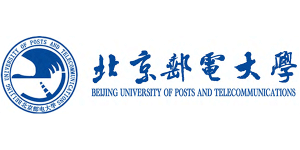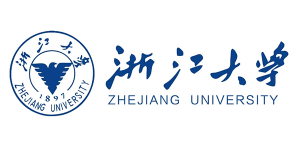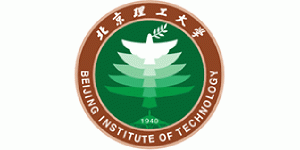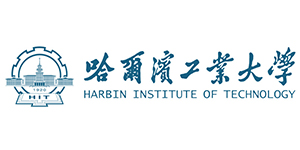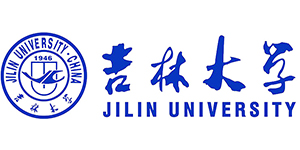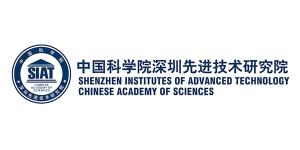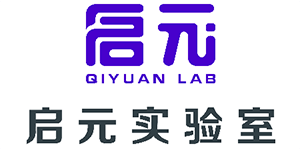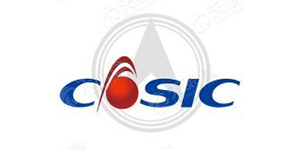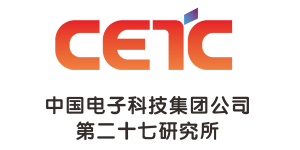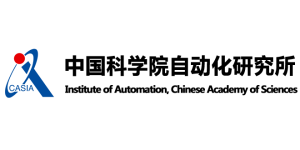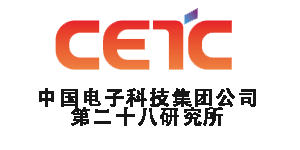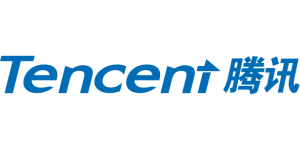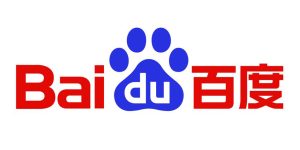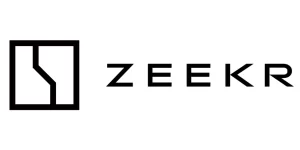





With the explosion of Artificial Intelligence technologies, Large Language Models (LLMs) have become a "potential partner" in the design field - collaborating with LLMs (HAC) can shorten the design cycle, accelerate the idea generation, and improve cognitive flexibility, as compared to the traditional Human-Human Collaboration (HHC). and cognitive flexibility than traditional human-human collaboration (HHC). However, for LLMs to be truly effective, they need to be "framed": researchers often combine concept generation techniques (CGTs) with LLMs at different levels of structure, such as unstructured "brainstorming" (where ideas are stimulated by free associations), highly structured "brainstorming" (where ideas are stimulated by free associations), and highly structured concept generation techniques (HAC). Unstructured "Brainstorming" (free association to stimulate ideas), highly structured "TRIZ Invention Problem Solving Theory" (reduction of trial and error by using a matrix of contradictions, the 40 Principles of Invention).
However, there are obvious gaps in the existing research: either focusing on designing the final result, or analyzing the cognitive process by questionnaires, interviews, and other subjective methods, which cannot objectively reveal the neural mechanisms of designers; and although neuroscience has found that "different CGTs activate different brain regions", whether this conclusion holds true in the collaborative scenarios of LLM, no one has verified it yet. No one has verified it. Functional Near Infrared Spectroscopy (fNIRS) technology is the answer to this problem - it can directly monitor the activity of the prefrontal cortex (PFC), the core brain region of design, and is portable and adaptable to natural scenarios, which can fill this research gap.
Using Human-Human Collaboration (HHC) as a baseline, this study compares how two types of collaborators (LLM agents vs. experienced designers) and two types of CGT (brainstorming vs. TRIZ) affect designers' neural activity, cognitive load and creative performance. The core is to figure out three questions: how do different collaboration modes and CGTs affect cognitive load? How do they change prefrontal functional brain networks? And how does it work on creative thinking?
Theoretically, this is the first time that neuroscience tools are used to analyze the cognitive mechanism of LLM collaboration, which can extend the "dual-processing theory" and "cognitive network theory" to the field of design, and establish an integrated research framework of "cognitive-neurological-performance". From the practical point of view, the results of the study can provide scientific basis for the development of LLM design agents - for example, which type of CGT is more suitable for matching with the agent, and also help design teams to find out the "complementary points between HAC and HHC", for example, HAC improves the performance of the agent, and HHC improves the performance of the agent. It can also help design teams find "complementary points between HAC and HHC", for example, HAC improves efficiency while HHC retains originality and optimizes the collaboration model. In addition, for industries that rely on efficient design in high-density cities, this can also provide new ideas for the realization of "AI+Design".
Research Methodology
This study used a laboratory-controlled design, focusing on comparing the combined effects of the two core variables. 32 healthy Chinese design practitioners (mean age 26.4 years, including master's degree, PhD, and faculty members) participated in the experiment, all of whom met the criteria of "more than 5 years of experience in product design + 6 months of experience in using the high-frequency use of the LLM," and did not have cognitive impairments.
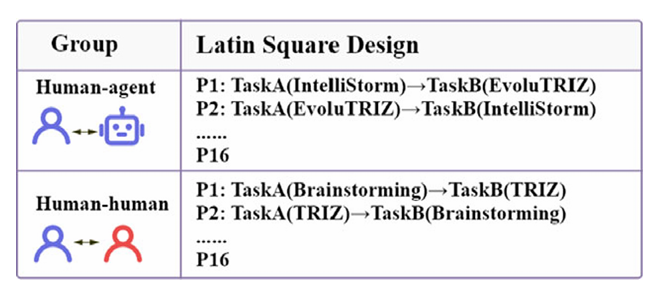

For the experimental tools, functional near-infrared spectroscopy (fNIRS) was used to monitor the oxygenated hemoglobin (Oxy-Hb) levels in the prefrontal lobe and key brain regions, and to analyze the cognitive load and brain network; the "expert score" was used to evaluate the creative performance (scored by fluency, flexibility, originality, and thoroughness); and the data were analyzed by The data were analyzed by ANOVA, Scheirer-Ray-Hare test (for non-normal data), and processed by MATLAB, SciPy, and SPSS to ensure reliable results.
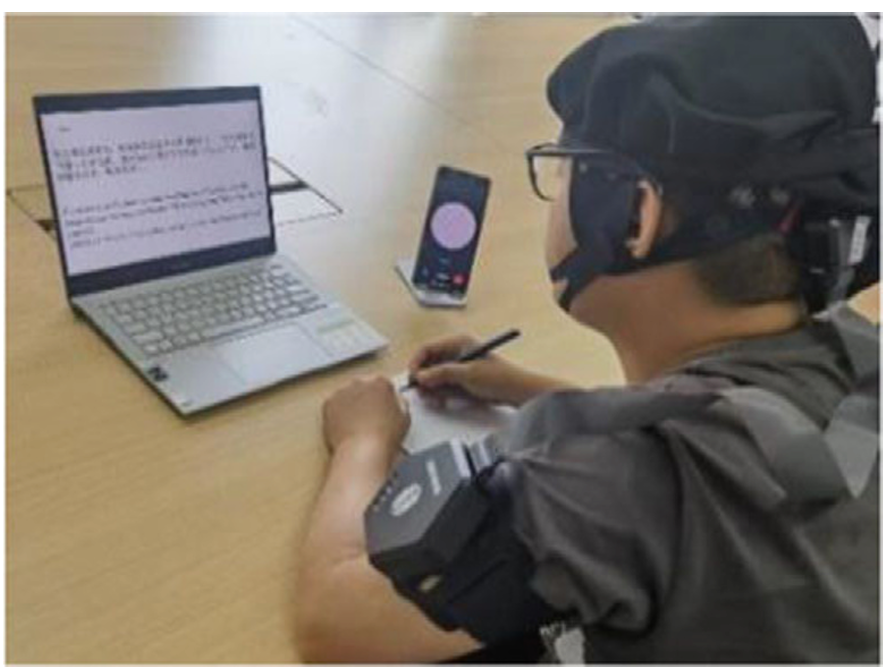

For the brain area arrangement, the focus is on monitoring the designer's prefrontal cortex (PFC) - a region that is the core brain area for idea generation and cognitive regulation. The device is arranged on the fNIRS cap by 16 sensors (8 emitters, 8 detectors) in a 10/20 international system, forming 22 monitoring channels, covering 5 key brain area subregions: left dorsolateral PFC (L-DLPFC), right dorsolateral PFC (R-DLPFC), left ventral lateral PFC (L-VLPFC), right ventral lateral PFC (R-), and medial PFC (mPFC). VLPFC) and medial PFC (mPFC), while excluding the orbitofrontal cortex (OFC), which has a limited role in design cognition.
The subregions of the brain assume different cognitive functions: the right ventral-lateral PFC (R-VLPFC) is responsible for evaluating problems, exploring the problem space, and detecting similarities, and is the core area for cognitive resource coordination in human-agent collaboration (HAC); the right dorsolateral PFC (R-DLPFC) dominates divergent thinking and unstructured problem solving, which is closely related to brainstorming and idea stimulation; the left dorsolateral PFC (L-DLPFC) is good at goal-oriented solution planning, abstract reasoning, and rule application, and plays a key role in the logicalization of innovation in TRIZ methods. The right dorsolateral PFC (R-DLPFC) dominates divergent thinking and unstructured problem solving, which is closely related to the brainstorming process of idea stimulation; the left dorsolateral PFC (L-DLPFC) is good at goal-oriented programming, abstract reasoning and rule application, and plays a key role in the logical innovation of TRIZ methods.
During the monitoring process, each channel captures changes in oxygenated hemoglobin (Oxy-Hb) concentration in the cerebral cortex through a "light source-receiver" pair - an indicator that directly reflects the intensity of neural activity and provides objective neurological data to support the subsequent analysis of the impact of different modes of collaboration (HAC/HHC) and different concept generation techniques (Brainstorming/TRIZ) on cognitive processes. This indicator can directly reflect the intensity of neural activity, providing objective neural data for the subsequent analysis of the effects of different collaboration modes (HAC/HHC) and concept generation techniques (brainstorming/TRIZ) on cognitive processes.
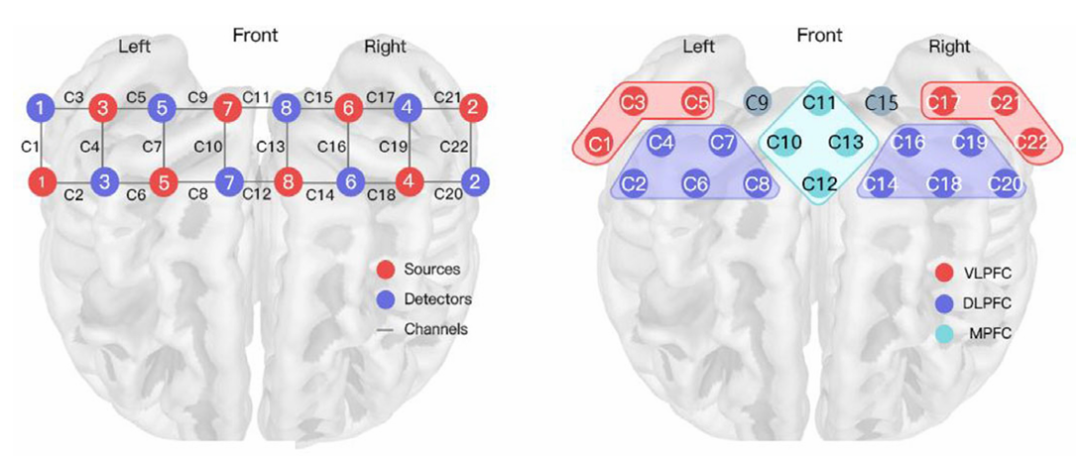

Research hypothesis:
1. LLM collaboration (HAC) reduces cognitive you load more than person-to-person collaboration (HHC);
2. Different CGTs activate different brain regions - Brainstorming activates the right dorsolateral PFC (responsible for divergent thinking) and TRIZ activates the left dorsolateral PFC (responsible for logical reasoning);
3. HAC improves fluency and flexibility, and HHC is better at originality;
4. collaborator type and CGT have an interaction effect that will jointly affect cognition and performance.
The independent variables are "type of collaborator (LLM agent/experienced designer)" and "type of CGT (brainstorming/TRIZ)"; the dependent variables are divided into three categories - neural level ( DC of node centrality in prefrontal subregion, ND of network density, and AUC value of Oxy-Hb), cognitive level (cognitive load), and performance level (fluency, flexibility, originality, and exhaustiveness); and the control variables included subjects' design experience, LLM usage duration, experimental environment (soundproofing, light control), and task duration (8 minutes per task) to avoid interfering with the results.
The experiment presented the CGT with two agents developed based on the GPT: "IntelliStorm" focuses on brainstorming, with an enthusiastic style that encourages free ideas, and "EvoluTRIZ" focuses on TRIZ, with a concise style that follows a systematic step-by-step guide, with each agent corresponding to three parallel design tasks to ensure consistent stimuli. Each agent corresponds to 3 parallel design tasks to ensure consistent stimulation.
The total duration of the experiment was about 90 minutes, divided into three phases: first, the preparation phase (10 minutes) - subjects signed the informed consent form, wore the fNIRS device, learned the rules of CGT, and also practiced with the "outdoor drinking water product design" to familiarize themselves with the process; then Baseline collection (2 minutes) - subjects sit still and record the physiological baseline of the prefrontal lobe; finally, task execution (about 70 minutes) - subjects randomly complete the "LLM agent + brainstorming" "LLM agent + brainstorming" "LLM agent + brainstorming" and "LLM agent + brainstorming". ", "LLM agent + TRIZ", "human + brainstorming", "human + TRIZ", four combinations of tasks (designed in a Latin square to avoid the Each task consisted of an 8-minute collaborative discussion, followed by a 1-3 minute verbal description of the "Function-Behavior-Scheme (F-B-S)" of the solution, interspersed with short breaks.



The laboratory environment is strictly standardized: temperature is controlled at 22-25°C, noise is below 40 dB, lighting is soft, and the entire process is supervised by 2 trained technicians to ensure consistent experimental conditions.
Experimental material design scenarios: two core design tasks - "Cross-Language Communication Challenge" (designing products/services to help tourists overcome language barriers, e.g., asking for directions, ordering food), "Beginner's Culinary Challenge (designing a solution that allows zero-experienced people to make good food), each of which requires the integration of the three elements of "function-structure-user behavior"; and the profiles of the LLM agents, which specify "IntelliStorm" and "Eclipse", and "Eclipse". There are also LLM agent profiles that specify the roles, dialogue styles, and response rules of "IntelliStorm" and "EvoluTRIZ", such as the former's emphasis on "non-judgmental encouragement" and the latter's emphasis on "logical clarity". The former emphasizes "non-judgmental encouragement" and the latter emphasizes "logical clarity".
Experimental apparatus: CORTIVISION Photon Cap C20 fNIRS device (Poland), sampling rate 10Hz, wavelength 780/830nm, covering 22 channels in the prefrontal lobe, accurately monitoring the Oxy-Hb changes; HP StarBook pro14 laptop for presenting the task description, ThinkPad X1 Carbon synchronization fNIRS data; iPhone14 running LLM agent, CyberLink Smart Recorder SR501 to record the collaboration process, and subsequent conversion to text for expert scoring; and "Expert Scoring Sheet" based on Torrance Creative Thinking Dimensions to ensure uniform scoring standards.
Study results
Cognitive load: HAC is significantly easier
The cognitive load of LLM collaboration (HAC) (AUC value for Oxy-Hb: 4.66 × 10-³) was significantly lower than that of person-to-person collaboration (HHC: 6.65 × 10-³), p
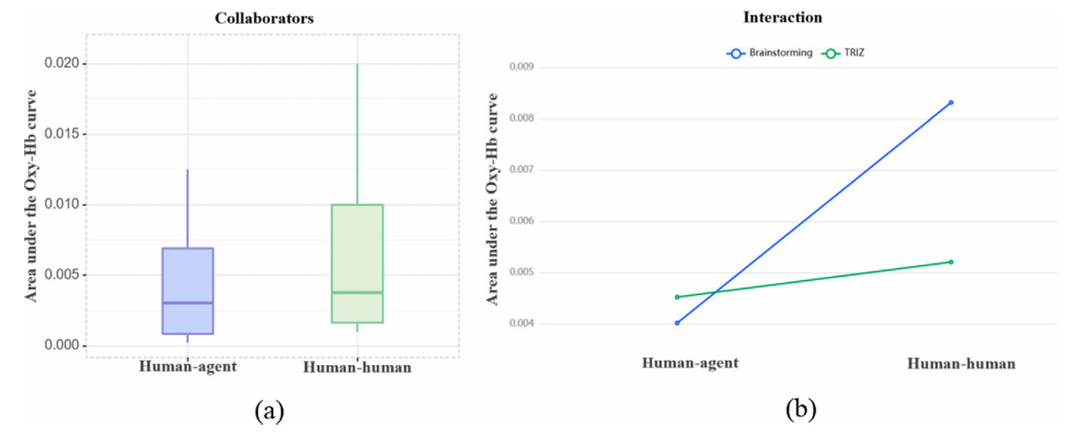


AUC results (a) Main effects of different collaboration styles (b) Interaction effects
Brain networks: HAC activates key brain regions, CGT has its own focus
Collaborator Type Impact:HAC significantly increased the node centrality of "right ventral lateral PFC (R-VLPFC)" (DC: 0.56 vs. HHC: 0.38), p=0.002, which is responsible for "similarity detection" and "hypothesis generation", suggesting that LLM collaboration optimizes the network status of core cognitive functions. "hypothesis generation", suggesting that LLM collaboration optimizes the network status of core cognitive functions; and prefrontal network density was much higher in HAC (ND: 0.55) than in HHC (0.16), p
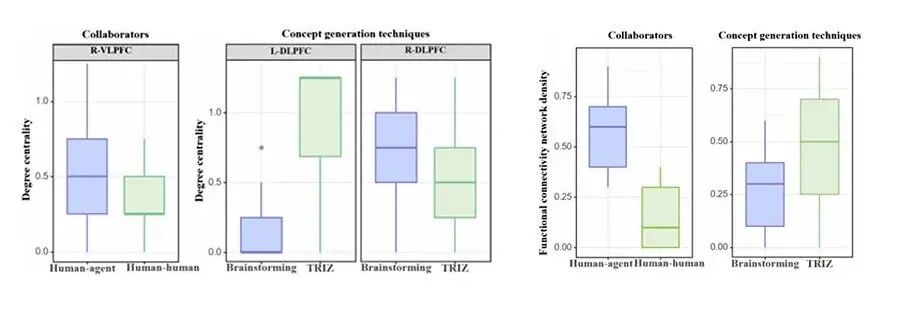


CGT Impact:TRIZ significantly activated "left dorsolateral PFC (L-DLPFC)" (DC: 0.92 vs. brainstorming: 0.14), p
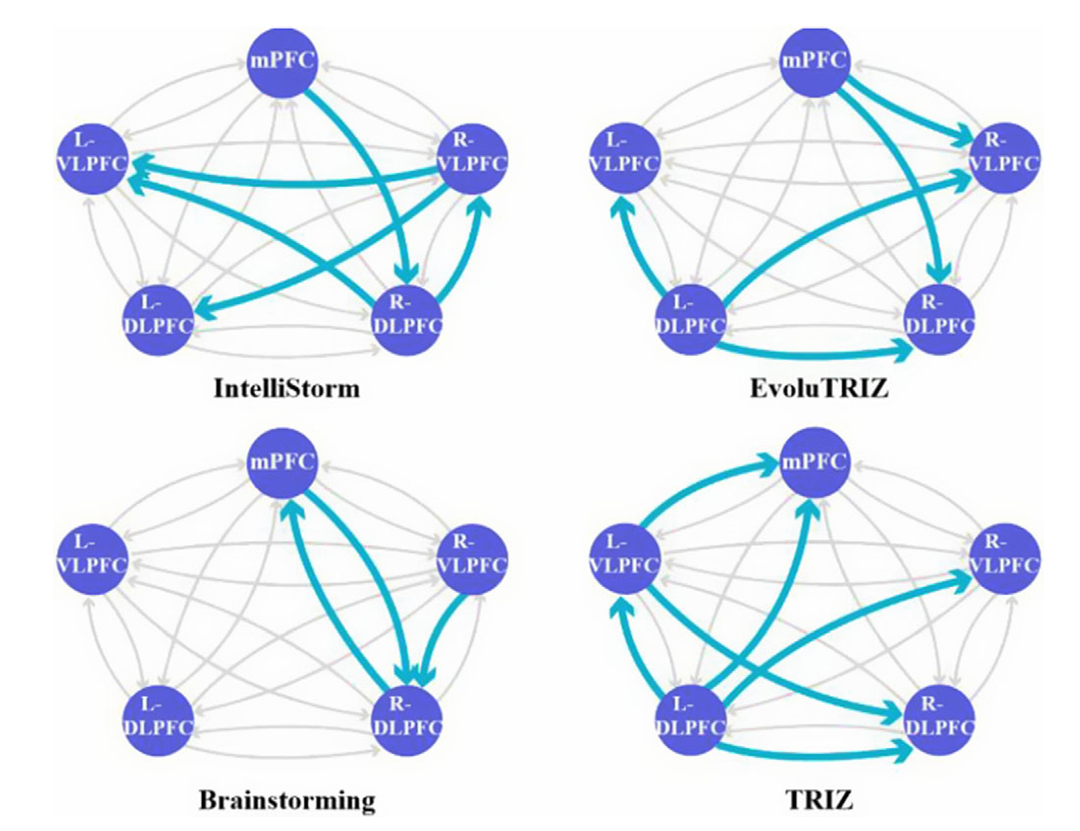


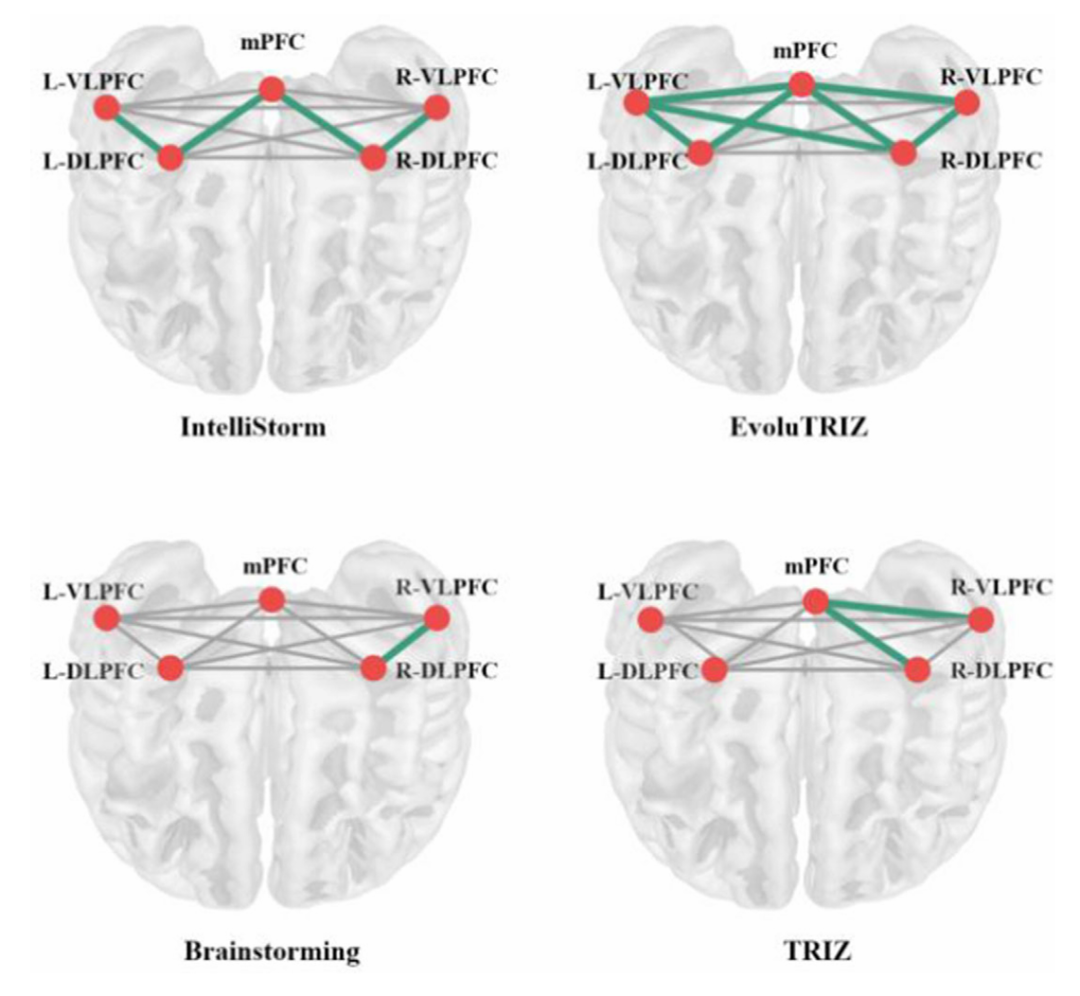


Creative expression: HAC wins in efficiency, HHC wins in originality
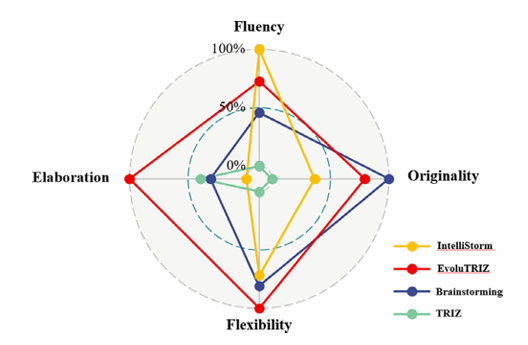


Fluidity:HAC generated significantly more scenarios (3.84) than HHC (1.94), p=0.005; brainstorming also produced more ideas than TRIZ (3.44 vs. 2.34), p=0.002.
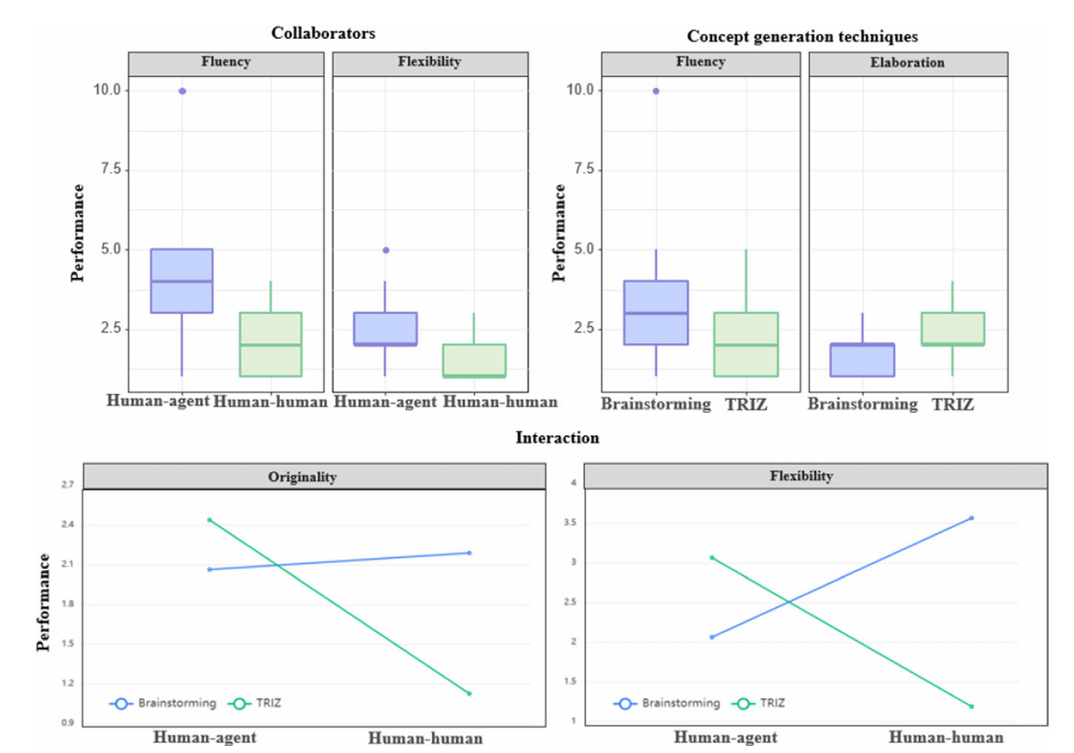


HAC and HHC are complementary - HAC is suitable for improving efficiency, HHC is irreplaceable in terms of originality, and human intuition, emotional resonance, and experiential knowledge remain difficult for AI to surpass;
Subsequent studies can expand the sample (e.g., including designers from different cultural backgrounds), validate the conclusions in real design scenarios, and explore the combination of more CGTs (e.g., Morphological Analysis, SCAMPER) and LLM, so as to make the "AI+Design" more accurate and grounded!
Link to original article.Comparing TRIZ and brainstorming in human-agent design collaboration:effects on cognitive processes and performance | AI EDAM | Cambridge Core
Company Profile
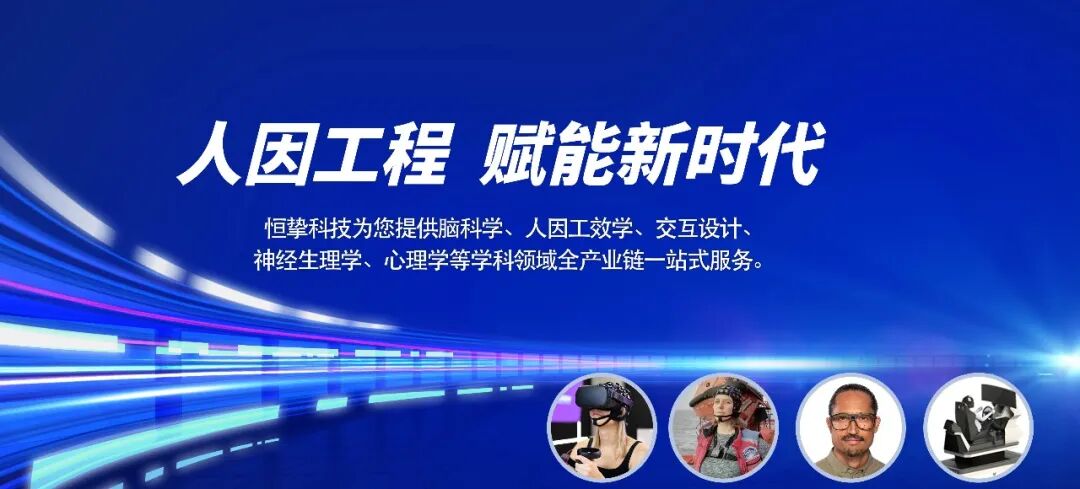


With excellent innovation ability, Hengbest Technology has been awarded many invention patents, software copyrights and registered trademarks, selected in many authoritative lists such as National High-tech Enterprises, and participated in the compilation of national standards and group standards. The company has been serving universities and research institutes for a long time, and has cooperated deeply with many national societies such as the Chinese Society of Ergonomics, the Chinese Psychological Society, the Architectural Society of China, etc. The company organizes and participates in more than 40 academic conferences every year to promote technical exchanges and the development of the industry.
恒挚 Technology upholds the concept of "doing our part for the cause of scientific research", and is committed to becoming a leading scientific research-supporting science and technology enterprise, contributing to the progress of national science and technology and social development, and joining hands with partners from all walks of life to achieve a better future empowered by science and technology.
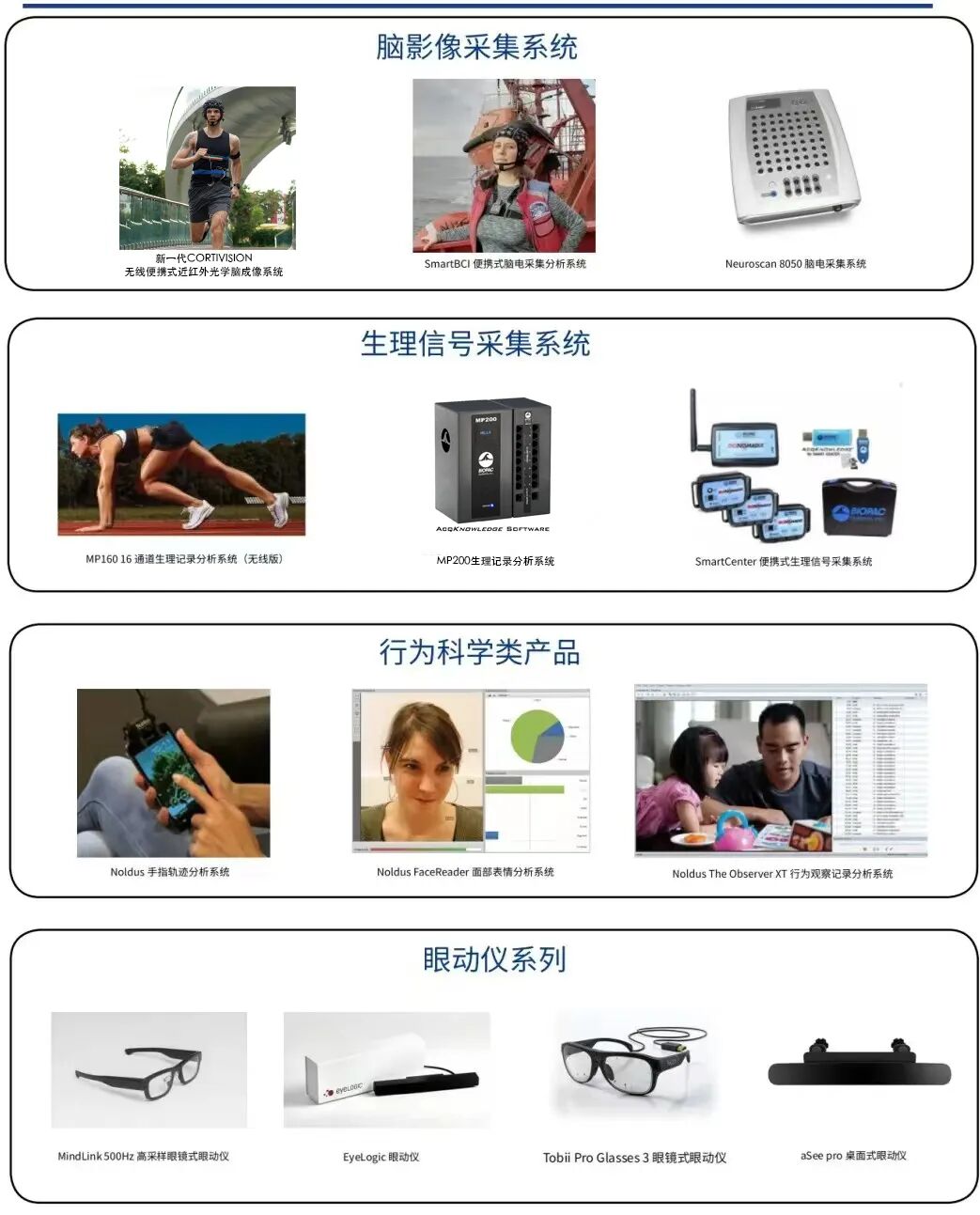


Scan the code to follow us








